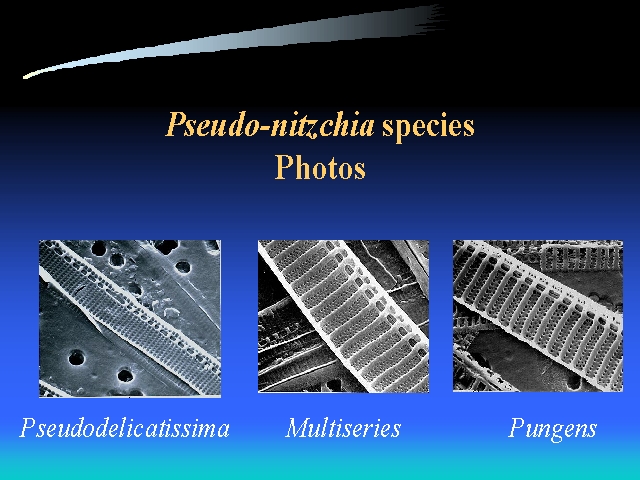Slide 8 of 17
Notes:
8. PSEUDO-NITZSCHIA SPECIES
-some produce toxin some donít
-Possible to tell shape and size w/light, but some species are similar
-only way to tell is with Scanning Electron Microscopy (SEM)
-depends on size range/number of pores
MESSAGE: NECESSARY TO LOOK AT SPECIES LEVEL TO TELL IF TOXIN PRODUCERS ARE PRESENT
Some species of Pseudo-nitzschia produce toxin and some donít. At the present time species identification is based on morphology, i.e., looking at the size, shape, and morphological features of the diatoms. Some species can be identified by using light microscopy while others the use of SEM is required, e.g., differentiating P. pungens from P. multiseries.
Pseudo-nitzschia species may be differentiated by counting the rows of pores that are present between the striae in the diatoms shell, note in the slide the differences between pungens and multiseries. This is differentiation is important, since multiseries produces toxin while pungens only produces small amounts of toxin.
The diatom on the left of this slide is P. Pseudodelicatissima. And incidentally this is the species that we believe is the causative organism in the bloom and produced toxin during the September 1998 event. It has been shown to produce toxin in Canada.
The other two species are P. multiseries and P. pungens. These two species were not present in samples from this bloom, they are shown only for comparison purposes.

















